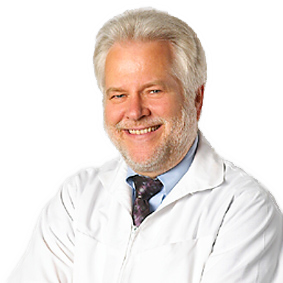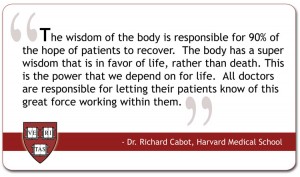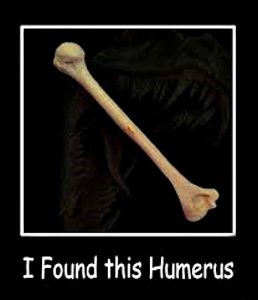Courtesy of:
John H. Keefe III, D.C.
(918) 663-1111
IN THE NEWS: ‘What the Health’ — Where This Vegan PR Film Went Wrong The documentary, “What the Health,” ignores accumulated evidence against sugar in a misguided effort to promote vegan ideology. According to the film, the focus on sugar as a contributor to obesity, diabetes and ill health has steered people away from the real culprits, which they claim are meat and animal fat. For example, Dr. Neal Barnard, adjunct associate professor of medicine at the George Washington University School of Medicine and Health Sciences and president of the Physicians Committee for Responsible Medicine, claims that diabetes is not caused by a high-carb, high-sugar diet. In his view, diabetes is caused by fat buildup caused by a meat-based diet. To treat diabetes, Barnard recommends a low-fat vegetarian diet, free of any and all animal products, without any restrictions on carbohydrates. The sugar industry promotes the myth that saturated fat is to blame for weight gain and ill health, not sugar, along with the thoroughly debunked energy balance theory. Fortunately, some great books have now been written exposing the history and extent of the cover-ups. Two examples are science journalist Gary Taubes' book, "The Case Against Sugar," and Marion Nestle's "Soda Politics: Taking on Big Soda (and Winning)." While a high-vegetable diet is certainly beneficial, the low-fat, unrestricted-carb recommendations are not. Low-carb, high-fat diets have proven superior for controlling insulin resistance, which is the hallmark of obesity and metabolic dysfunction. NOTE: This article points out the fight within nutritional science between the high protein low carb diet and the high complex carb low-fat diet. The truth is both diets are correct for different populations, 60 to 70% of the population should be on a high protein low carbohydrate diet where 30 to 40% of the population need to be on a low fat high complex carb diet. It’s a matter of genetics, we are not all the same. KNOW your body type!
WELLNESS: Are you getting enough fiber? One of the most underserved nutrients today is fiber. Typically missing or very low in packaged and fast foods, fiber intake for most Americans is woefully low. Adults need between 20 to 30 grams of fiber every day for optimal health, but most Americans get only about 15. I believe the ideal is closer to 32 grams. What potential benefits might you expect when you increase the amount of fiber you eat each day? Fiber: Assists in managing your weight by helping you feel full longer Helps promote regularity Helps support your heart health Helps support healthy GI function. Your body needs two different types of fiber: soluble and insoluble. Soluble fiber helps slow down your digestion and helps maintain glucose and blood cholesterol levels already in the normal range. Good food sources are nuts, seeds, apples, and blueberries. Insoluble fiber helps propel food through your digestive tract and promotes regularity. Good food sources include dark green leafy vegetables, green beans, celery, carrots, and brown rice. Many whole foods, especially fruits and vegetables, contain both soluble and insoluble fiber, a real nutritional bonus.
CHIROPRACTIC: How Does Chiropractic Work? Many people seek chiropractic care when their back goes out or their neck tightens up. But how does this form of care actually work? What are the benefits of receiving chiropractic care for nerve dysfunction compared with other healthcare options? Let’s take a look! First, let’s discuss how the nervous system “works.” We have three divisions of the nervous system: the central, peripheral, and autonomic nervous systems. The central nervous system (CNS) includes the brain and spinal cord, and it’s essentially the main processing portion of the nervous system. The spinal cord is like a multi-lane highway that brings information to the brain for processing (sensory division) and returns information back to the toes, feet, legs, and upper extremities from which the information originated (motor division). For example, hiking on a mountain trail or simply walking requires constant input to and from the CNS so we can adjust our balance accordingly and not fall. These “sensory-motor pathways” are essential and allow us to complete our daily tasks in an efficient, safe manner as information is constantly bouncing back and forth between the brain and the rest of the body. The peripheral nervous system (PNS) includes a similar sensory/motor “two-way street” system relaying information back and forth from our toes/feet/legs and fingers/hands/arms to the spinal cord (CNS). And if this isn’t complicated enough, we also have “reflexes” that, for example, allow us to QUICKLY pull our hand away from a hot stove to minimize burning our fingers. Reflexes allow the information to “skip” the brain’s processing part so quicker reactions can occur. The autonomic nervous system (ANS) includes the sympathetic and parasympathetic divisions that basically “run” our automatic (organ) functions like breathing, heart rate, digestion, hormonal output, and more. There is constant communication between the ANS, PNS, and CNS that allow us to function in a normal, balanced way… unless something disrupts them. There are obvious conditions that interfere with this communication process that include (but are not limited to) diabetes (with neuropathy), frost bitten or burned fingers, peripheral nerve damage from conditions like carpal/cubital tunnel syndromes, thoracic outlet syndrome, and/or pinched nerves in the neck, mid-back, low-back spinal regions, as well as conditions such as multiple sclerosis (MS), Guillain-Barre Syndrome, after a stroke (spinal cord or brain), and after trauma with resulting fractures where nerve, spinal cord, and/or brain damage can occur. These are “obvious” reasons for delayed or blocked neurotransmission. There are many other less obvious injuries or conditions that can result in faulty neuromotor patterns and nerve transmission of which chiropractic services can benefit. The “subluxation complex” is a term some chiropractors use to describe the compromised nerve transmission that may occur if a nerve is compressed or irritated due to faulty bone or joint position along the nerve’s course. Reducing such nerve compression typically allows for a restoration of function. A good illustration of this is a patient who suffers from a herniated disk in the neck with numbness and tingling down the arm to the hand. The goal of treatment (for all healthcare professionals) is to remove the pinch of the nerve. To realize this goal, doctors of chiropractic utilize spinal manipulation and mobilization in addition to other non-surgical, non-drug approaches that may include exercises, nutritional advice, home-care such as a cervical traction unit, and other anti-inflammatory measures (ice, modalities like low level and class IV laser, electric stimulation, pulsed magnetic field, and more). Given the minimal side-effect risks and well-reported benefits, it only makes sense to try chiropractic FIRST and if you’re not satisfied, your doctor will help you find the next level of care.
FUNNY BONE: Ah, marriage. I was standing in front of the bathroom mirror one evening admiring my reflection, when I posed this question to my wife of 30 years: “Will you still love me when I’m old, fat, and balding?” She answered, “I do.”@@ As the music swelled during a recent wedding reception, my hopelessly romantic husband squeezed my hand, leaned in, and said, “You are better looking than half the women here.”
Visit our web site: keefeclinic.com or faceebook/keefeclinic.com





